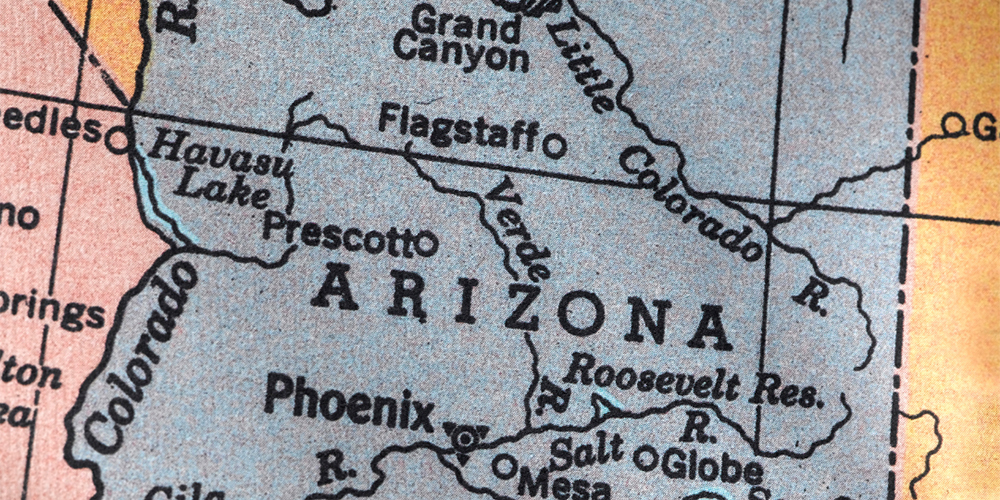Arizona, the last contiguous state to enter the union, is well known for a great deal of cultural, historical, and natural wonders! It is home to the Grand Canyon, Monument Valley, and 22 federally recognized indigenous nations. But, Arizona is also home to many interesting and important native plant species, each of which serves a purpose beyond simple aesthetic beauty.
In this article, we will introduce you to some of those native plants, as well as some of their invasive counterparts, and a few things you can do to help foster the native plant population in this beautiful state!
The Importance of Native Plants
If you are a lover of plants and nature, you may have heard the buzz lately about native plants. Botanical gardens, ecological organizations, and even home gardeners are beginning to see the value of these species, and we hope you will too!
So, what’s the big deal with native plants, anyway? Well, native plants are plants that are naturally found in a given area. They are perfectly suited to their original environments, whether those environments are cold, hot, desertous, tropical, or anything in between. They are also perfectly suited to provide shelter and food for native animals. Together, native plants and their native animal friends work together to create a great deal of healthy biodiversity in any given landscape.
Unfortunately, there are a great deal of other plants that exist within our environment that are not native to the area. Such plants were introduced in many different ways and threaten native species, both flora and fauna. The most important thing you can do as a home gardener is to use native plants in your landscape, rather than those that aren’t suited for your environment and climate.
Natives Plants of Arizona
There are many plants that can be found naturally in any given area. We have created a list of just some of those that are native to Arizona. Native plants do not abide by political borders, so you may find that many plants in the following list can be found naturally in Arizona as well as other southern American states and even Mexico! All, however, are very interesting and we hope that you will consider adding some to your own garden at home!
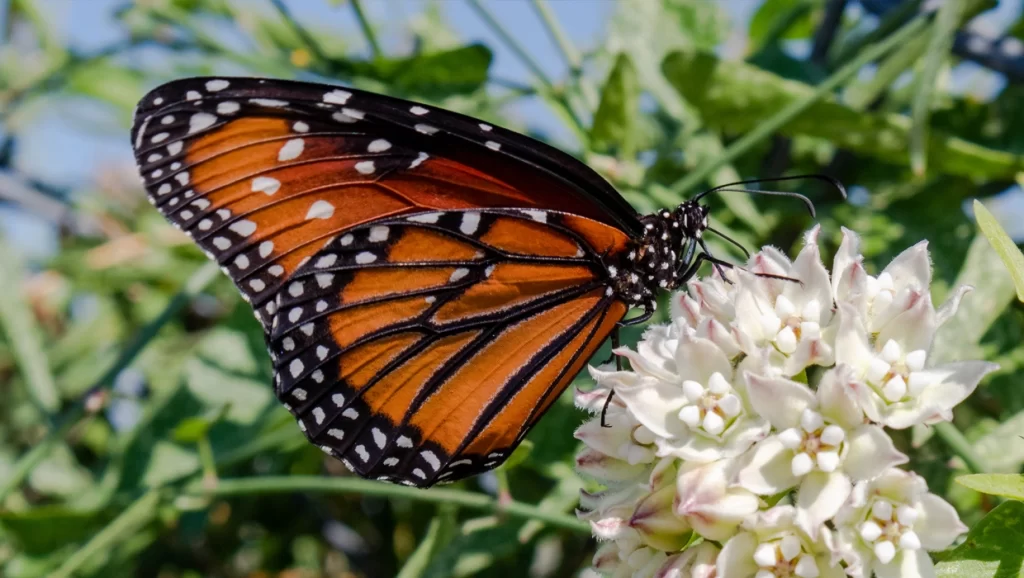
Perennials
Arizona Milkweed (Asclepias angustifolia)
A very unique and rare milkweed, Arizona milkweed is only found only in Arizona! It has many small white florets rising up from a single stem, and its leaves are fine and feather-like. Like most Arizona natives, Arizona milkweed is a pretty low maintenance plant, requiring very little water and growing in woodlands, mountainous regions, and canyons. It’s a great choice for any Arizona native garden!
Blackfoot Daisy (Melampodium leucanthum)
A small mounding perennial, blackfoot daisies are a great choice for a native Arizona garden! With cute white flowers that smell of honey, Melampodium leucanthum attracts pollinators as well as people! If you take a look at this native plant’s stems and roots, you will recognize the origin of its name; its feet (or the lower part of the plant) are black!
Desert Lavender (Hyptis emoryi)
A great perennial herb, desert lavender is yet another fragrant native plant for any desert garden! Despite its name, it is not a true lavender, but rather a member of the mint family! Since it doesn’t require much water, desert lavender is useful to drought-prone spaces, as well, even if they’re not technically desert regions. With small purple flowers and fuzzy stems and leaves, desert lavender is also a nice choice for attracting hummingbirds, bees, and other pollinators!
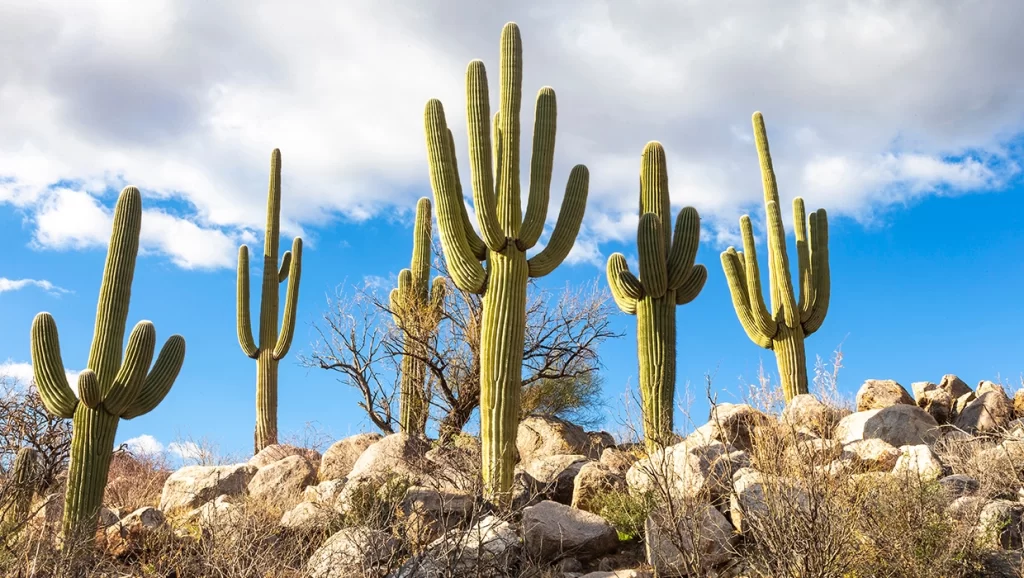
Cacti
Giant Saguaro (Carnegiea gigantea)
Growing the state flower of Arizona, the giant saguaro cactus is also the largest cactus in all of America! They are native to the southwestern U.S. and parts of Mexico and maintain a quintessential “cactus” shape! However, the giant saguaro is actually a very slow grower, growing only about an inch per year. But, what they lack in speed they make up for in longevity and height. These cacti can live up to 200 years and grow up to 50 feet tall!
Beavertail Prickly Pear (Opuntia basilaris)
A beautiful low-lying cactus that can be grown as a small shrub, the beavertail prickly pear is a beautiful native to add to your Arizona garden! Displaying large blue-gray flat paddles with golden bristle spines, this cactus’s paddles resemble the tail of a beaver! As the plant matures, it begins to grow gorgeous pink flowers that give way to small, blueish-gray fruit. This fruit is a great food source for birds and other animals, making beavertail prickly pear a good ecological choice.
Bonker’s Hedgehog Cactus (Echinocereus bonkerae)
Another great cactus shrub, Bonker’s hedgehog cactus is actually quite rare! This low-lying prickly plant is only found in central and southern Arizona, so if you happen to live there, it would make your native garden quite special! As opposed to the previous cactus, Bonker’s hedgehog has cylindrical stems and longer, white and yellow spines. In spring, its pink and purple flowers start to open. In summer, the flowers give way to bright orange and red fruit, offering the local wildlife a great little snack!
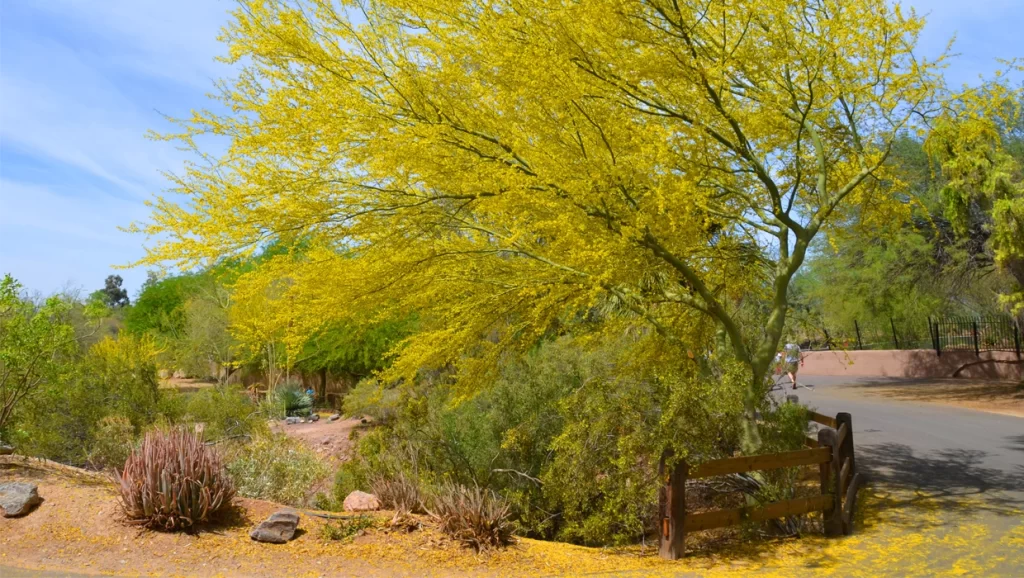
Trees
Foothill Palo Verde (Parkinsonia microphylla) & Blue Palo Verde (Parkinsonia florida)
If ever you find yourself at a dinner party and in need of a good conversation starter, look no further than the story behind Arizona’s state tree! Unlike most places, Arizona actually has two state trees, the Foothill Palo Verde and the Blue Palo Verde. This is simply because the government didn’t distinguish between the two native trees, only naming the state icon as the Palo Verde!
Overall, the trees are quite similar, as they are closely related to each other. Both have green-tinged trunks which help them photosynthesize, hinted at by their name which means “green stick.” In fact, palo verdes’ trunks provide ¾ of their photosynthetic food, leaving only ¼ to the leaves.
The main difference between these two native state trees is their leaves, the Foothill displaying many tiny, evenly spaced leaves and the Blue displaying fewer, slightly larger and more clumped leaves. Other than that, both species are quite important to another Arizona native, the Giant Saguaro, as they serve as a source of shade for young saguaro cacti. Plus, the Foothill Palo Verde is actually a keystone species, making it integral to the state’s flora and fauna.
Alligator Juniper (Juniperus deppeana)
Named for its alligator skin-like bark, the alligator juniper is a great native evergreen that can be found in southwestern America and parts of Mexico! Growing up to 65 feet, the alligator juniper enjoys mountainous, dry, and rocky landscapes, so make sure to give this tree a good amount of space and dry soil if planning on adding it to your garden.
This native tree also has a great deal of cultural importance to indigenous American tribes. The Navajo, Apache, and Yavapai tribes have all been known to use berries as food, boiling, grinding, and eating them raw!
Arizona Ash (Fraxinus velutina)
Also known as a velvet ash, this native tree is a deciduous, velvety-leaved shade tree that can be found from southern California to the southwestern U.S. The Arizona ash requires more water than many of the other plants we’ve seen so far, so its appearance is a sign to growers and passersby that there is a permanent source of water below!
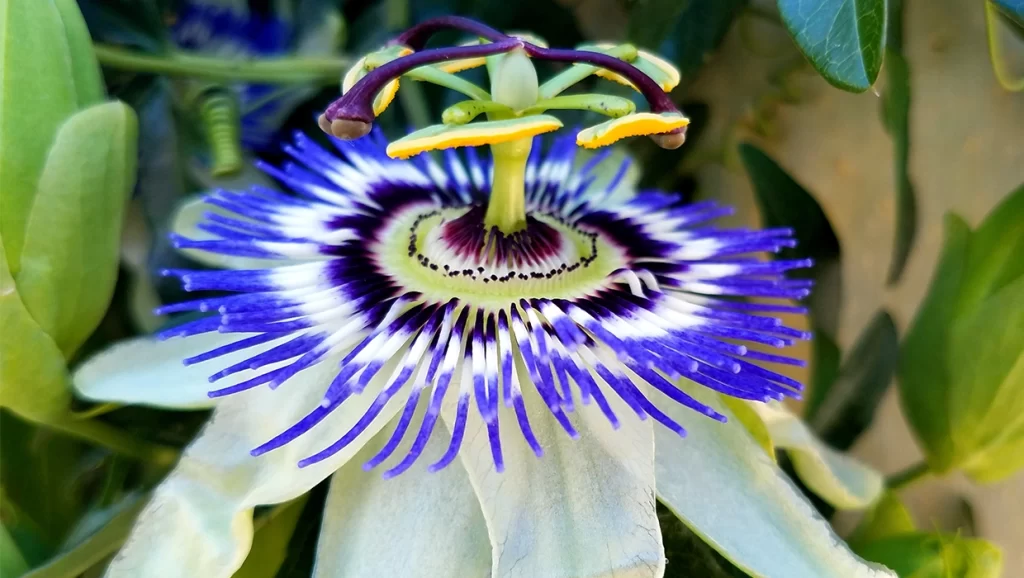
Vines
Arizona Passionflower (Passiflora arizonica)
Native to Arizona and Mexico, this passionflower is as stunning and interesting as any other! Climbing fences, gates, trellises, and even other plants, the Arizona passionflower uses springy tendrils to latch onto its holders. Its flowers open at night, spreading pleasant scents through the cool desert night air. However, they only last for one evening, attracting moths to extract their rare nectar! But, don’t think of taste testing any part of the Arizona passionflower; every part (save the fruit) is toxic, containing the deadly chemical cyanide.
Melon Loco (Apodanthera undulata)
A member of the gourd family, melon loco is a perennial vine that’s native to Arizona, New Mexico, Texas, and parts of Mexico. Although its fruit looks like other edible gourds, you should steer clear of eating this one; the word “loco” in a plant name tends to indicate some level of toxicity. That being said, melon loco is a great native plant for mesas, plains, and river dry washes.
Arizona Grape (Vitis arizonica)
A fantastic choice for an edible native garden, Arizona grape ivy is a very special species of grape! Typical wine grapes – which are native to the Mediterranean region – are highly susceptible to diseases and viruses. Arizona grape, on the other hand, is quite resistant against these diseases, making it an excellent replacement, in desert regions that is. Otherwise, Arizona grape is just a good choice for a native garden, as its fruit is perfect for wildlife as well as you!
Invasive Plants of Arizona
Akin to an evil twin, invasive plants are plant species that are not native to an area. Though in their own native environments, invasives are not all that bad, they do pose a great danger to places in which they were introduced. Invasive plants are typically able to easily out-compete their native counterparts, spreading through a landscape and significantly affecting biodiversity.
Below, we have listed out five major invasive plant species that threaten Arizona in hopes that you will be able to recognize and remove them from your garden.
Buffelgrass (Pennisetum ciliare)
Due to an unfortunate governmental decision, buffelgrass was introduced to Arizona in the 1930s as cattle feed. It spread and took over the landscape, as all invasives tend to do, surely lessening Arizona’s native plant populations. It is actually native to South Africa, but grows very vigorously in the southwestern U.S.
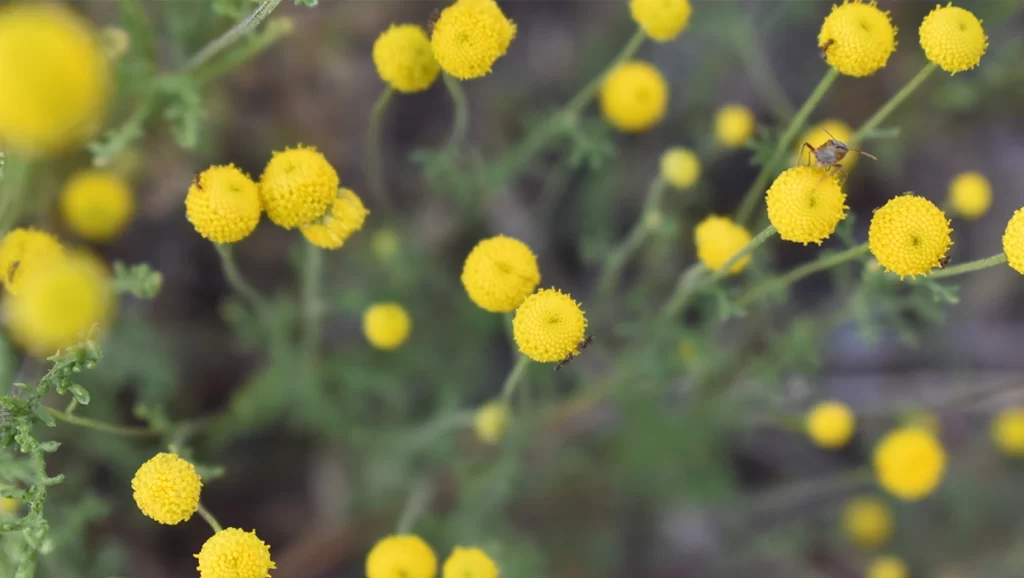
Globe Chamomile (Oncosiphon piluliferum)
Also known as Stinknet, globe chamomile is actually a pretty attractive and interesting plant, displaying yellow, spherical flower heads resembling golden lollipops! Unfortunately though, this South African native is quite dangerous to Arizona’s native plants, out-competing them by spreading fast and in dense clusters. Plus, globe chamomile can be harmful to people, causing contact dermatitis when touched and respiratory issues when inhaled. For that reason, we recommend taking abundant precautions when removing this invasive from your garden, using gloves, covering exposed skin, and even wearing a face cover.
Scotch Thistle (Onopordum acanthium)
Like many thistles, Scotch thistle is a very pesky weed. Easily spreading its seeds by sticking its seed pods to passersby, this invasive can be spread far and wide by animals and people alike. Plus, as its many seeds can also spread via water and wind, Scotch thistle poses a great danger to areas beyond Arizona. Though each plant is relatively short-lived, they each are able to produce up to 40,000 seeds each year. When removing it from your landscape, be sure to wear thick gloves; scotch thistle is covered in pinchy bristles that will definitely cause pain and irritation to skin.
Teasel (Dipsacus fullonum)
Native to Europe, teasel is an aggressive invasive that mostly spreads by seed. Each plant, which produces long, purple and white flowers, can make up to 2,000 seeds, each of which could stay viable for at least six years! Teasel also has a deep taproot, sometimes growing longer than two feet. Although its inflorescence is quite unique looking, we suggest you remove all teasel from your landscape and grow a native, instead.
Saltover (Halogeton glomeratus)
A member of the amaranth family, saltover is a very dangerous invasive, both to native plants and livestock. It grows and spreads easily, mostly due to its ability to accumulate and leach out salt into the soil, as its name suggests. This process makes it extremely difficult or even impossible for native plants to grow, essentially making the soil toxic. Additionally, when eaten, saltover can be toxic to animals, eliminating any value to wildlife.
5 Things You Can Do to Help Arizona’s Native Plants
Arizona’s native plants face threats from climate change, habitat loss, and invasive species. Conservation efforts are underway to protect them. Initiatives include reforestation projects, the establishment of protected areas, and the promotion of sustainable harvesting practices.
But, as a home gardener, you may wonder how you can get involved, how you can help protect Arizona’s native plant population. Well, don’t you worry, because we’ve compiled a list of 5 things you can do to help!
- Bye bye, Invasive Plants!
As long as you have the right equipment – gloves, soil knives, and pruners – feel free to help the environment by getting rid of invasive plants like the ones listed above!
- Hello, Native Plants!
Once you remove those pesky invasive plants from your landscape, why not replace them with helpful natives? Visit your local garden center for fully grown specimens or simply start off with seeds, like giant saguaro, blue palo verde, or alligator juniper!
- Welcome Home, Pollinators!
One surefire way to help native plants is to help their pollinators! Refrain from using harmful pesticides in the garden, as they will kill pests as well as pollinators. Plus, you could even purchase things like bee boxes or birdhouses to make pollinators and seed spreaders feel welcome in your space!
- Natural Fertilizers!
Sometimes, you may want to give your native plants some extra love with fertilizers. However, there’s really no need to drench the earth with harsh chemicals to do so. Instead, try using natural fertilizers like liquid seaweed!
- Get Involved!
Chances are, if you’re interested in helping out the environment in your neighborhood, others are, as well. So, check out your local parks departments, botanic gardens, and arboretums to see if they’re hosting any volunteer activities. You may find outings to remove invasives from parks, install natives in gardens, or care for city trees! But, of course, sometimes the most important place to start is your own backyard!
